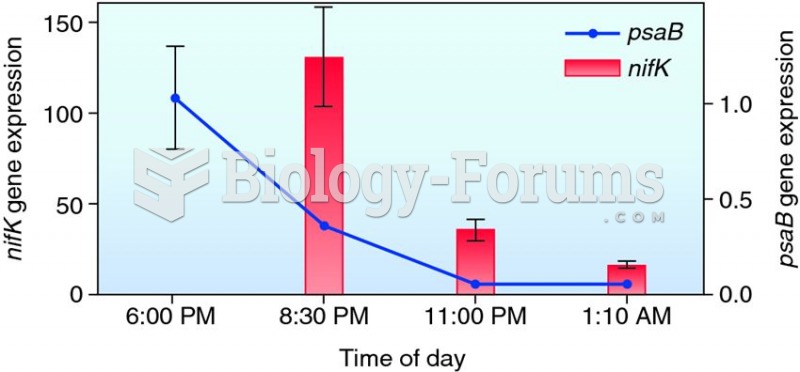This topic contains a solution. Click here to go to the answer
|
|
|
Did you know?
The average office desk has 400 times more bacteria on it than a toilet.
Did you know?
Elderly adults are at greatest risk of stroke and myocardial infarction and have the most to gain from prophylaxis. Patients ages 60 to 80 years with blood pressures above 160/90 mm Hg should benefit from antihypertensive treatment.
Did you know?
Elderly adults are living longer, and causes of death are shifting. At the same time, autopsy rates are at or near their lowest in history.
Did you know?
Vampire bats have a natural anticoagulant in their saliva that permits continuous bleeding after they painlessly open a wound with their incisors. This capillary blood does not cause any significant blood loss to their victims.
Did you know?
The FDA recognizes 118 routes of administration.
 Daily changes in photosynthesis and nitrogen fixation gene expression in Synechococcus cultures isol
Daily changes in photosynthesis and nitrogen fixation gene expression in Synechococcus cultures isol
 The heat range of a spark plug is determined by the distance the heat has to flow from the tip to ...
The heat range of a spark plug is determined by the distance the heat has to flow from the tip to ...





